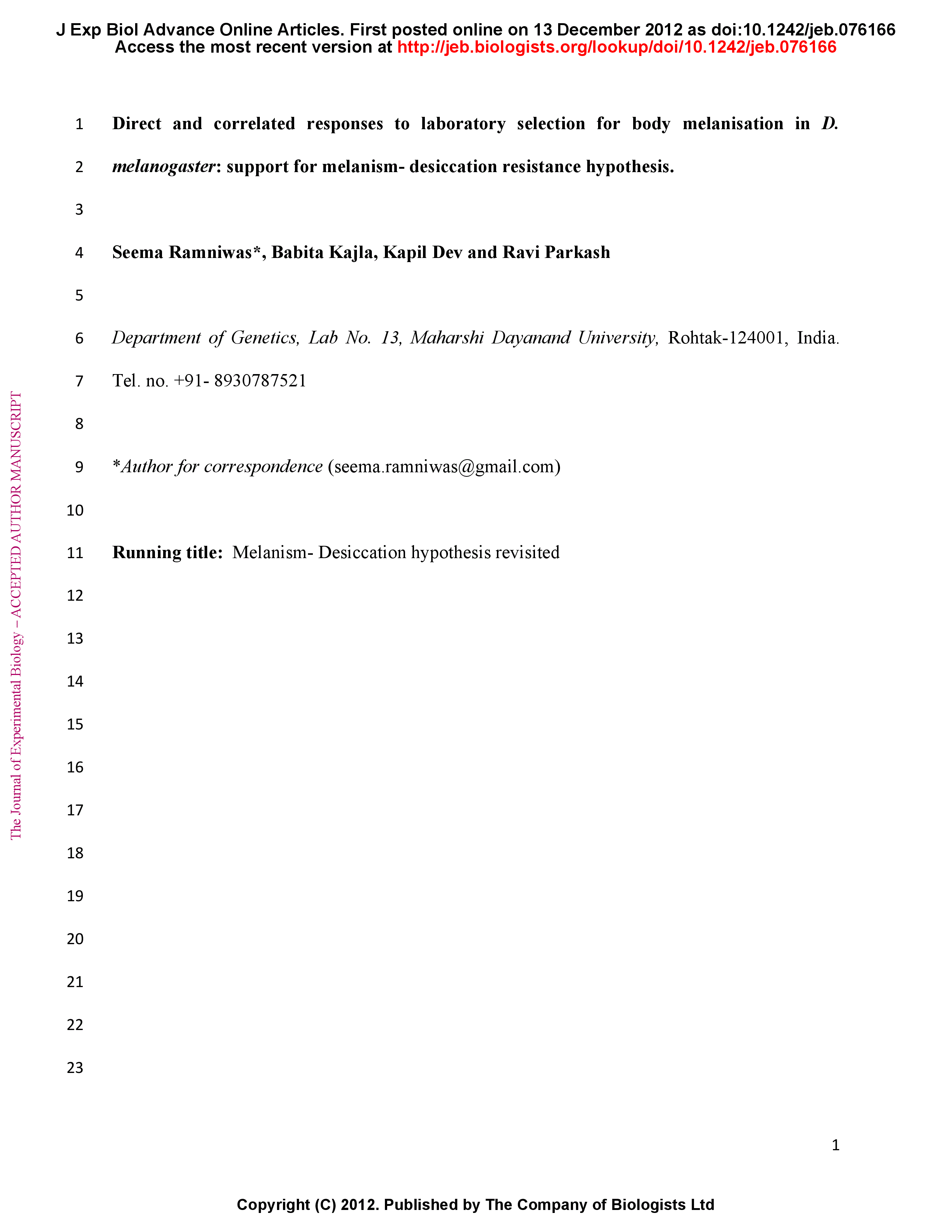Summary
For Drosophila melanogaster, cuticular melanisation is a quantitative trait, varying from no melanin to complete dark. Variation in melanisation has been linked with stress resistance, especially desiccation, in D. melanogaster and other species. As melanism has a genetic component, we selected melanic and non- melanic phenotypes of D. melanogaster, in order to confirm the association of desiccation resistance and rate of water loss with cuticular melanisation previously reported for this species. A bidirectional selection experiment for dark (D1- D4) and light (L1- L4) body color in D. melanogaster was conducted for 60 generations. In 60 generations of selection for pigmentation, an increase of 1.6 fold in selected dark strain and decrease of 14 folds in selected light strain was observed as compared to control populations. Desiccation hour increased significantly in the dark selected morphs as compared with control. The observed increase in desiccation resistance appeared as a consequence of decrease in cuticular permeability. Our results show that water balance related traits were significantly correlated with abdominal melanisation and were simultaneously selected bidirectionally along with melanisation.








